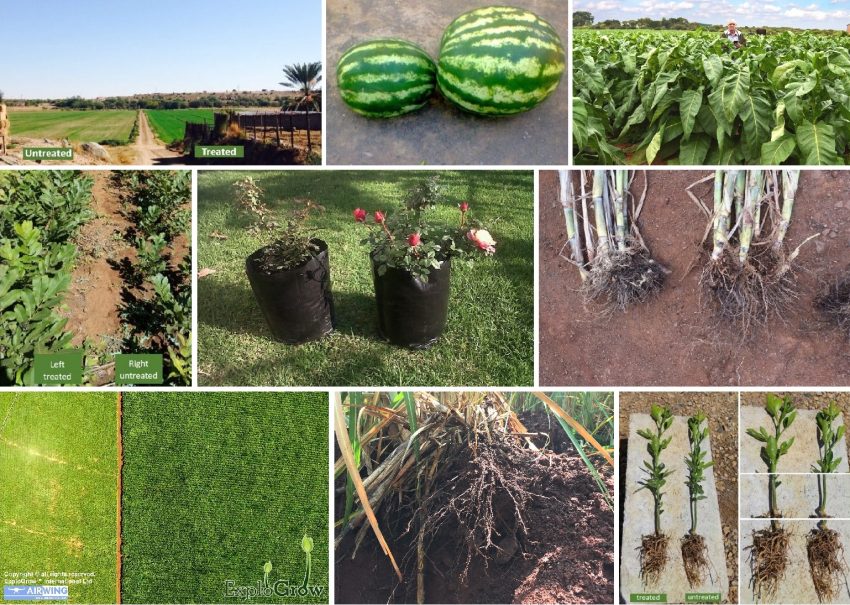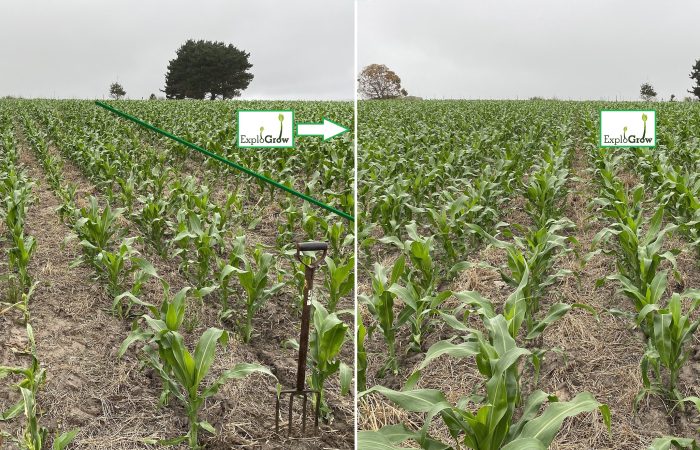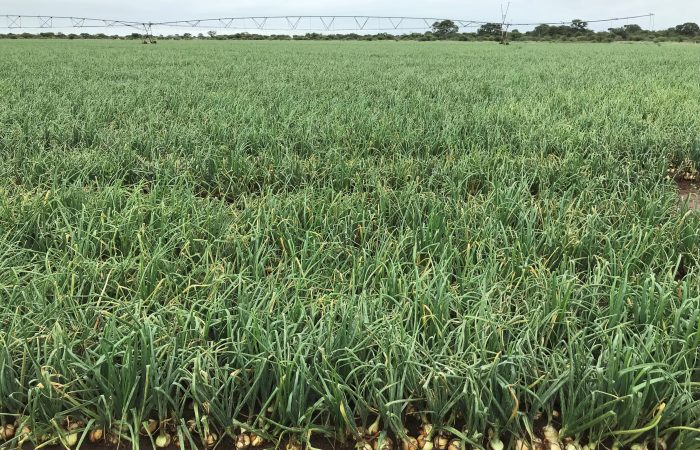17 beneficial microbes and some of their potent plant and soil functions

Microbial bio-fertilizers and bio controls contain living microorganisms which, when applied to the plant, seed or soil, colonise the
interior of the plant and the region of soil that is directly influenced by
root secretions and associated soil microorganisms (rhizosphere). This promotes
growth by increasing the supply or availability of primary nutrients to the plant.
The 17 micro-organisms contained in ExploGrow™ and their specific functions and effects on the soil and plant health functions explain how some of the microbes may enhance the plant's resistance to certain diseases.
The use of this carefully formulated poly-microbial blend promotes sustainable agriculture due to its nitrogen-fixing bacteria that even fixes atmospheric nitrogen; a potent phosphate solubiliser; microbes with soil balancing properties and more (see below).
The diverse functions performed by all these microbes, enables the farmer to "reduce Nitrogen, Phosphorus and Potassium (NPK) fertilizer inputs by 25%-50% ..." while promoting plant growth (yield), significant increasing nutrient absorption (crop quality), optimising soil/plant health and much more...
[References: 1, 2-7, 9, 10-12]
By Dr Stephanus Malherbe
BSc (cum laude) (microbiology)
BSc Hons (cum laude) (microbiology); MSc (microbiology)
Pr. Nat. Sci. (agricultural science); PhD (agronomy)
The exceptional effects of 17 blended beneficial soil microbes explained by Dr Malherbe, BSc; BSc Hons.; MSc (Microbiology); Pr.Sci.Nat. (Agricultural Science); PhD (Agronomy).
"The microbes listed below are:
- 100% organic, highly complex micro-organisms.
- have all been confirmed by DNA identification technique as active ingredients within the ExploGrow™ poly-microbial blend.
- environmentally friendly soil ameliorants
- plant growth stimulants, with increased soil microbial balance properties.
- safe, naturally occurring, harmless and can safely be used in agriculture."
"Flavimonas oryzihabitans
Also known as Pseudomonas oryzihabitans; known for the control of root knot nematode (Meloidogyne spp.) and Fusarium wilt on tomatoes; Pseudomonads are known for their versatility and usefulness in the agricultural context as biological control agents, phosphate solubilisers and plant growth promoting bacteria.
Rhizobium radiobacter
Strains from the genera and are among the most potent Phosphate solubilisers. Little information is available about this organism; it is linked to improved plant growth through secretion of compounds that stimulate plant growth.
Pseudomonas japonica
Calcium ion binding.
Azospirillum humicireducens
A free-living nitrogen fixer (therefore suitable for non-legumes); grows under anaerobic conditions, which means it can function in waterlogged heavy soils); optimum pH is 7.2; optimum growth temperature is 30° C.
Azotobacter vinelandii
A free-living nitrogen fixer (therefore suitable for non-legumes); grows under aerobic conditions; known for the secretion of phytohormones and vitamins into the soil; is an ideal 'plant growth promoting bacterium'.
Bacillus cereus
Plants benefit from the presence of because often prevents plant diseases, and can enhance plant growth. Bacillus cereus benefits by gaining shelter in the plant roots.
Bacillus licheniformis
A saprophytic soil bacterium; plays a major role in nutrient cycles in the soil; is ideal for use in agro-ecological and low-input production systems where crop nutrients are supplied via the organic matter of the soil.
[High capacity of secretion of the alkaline serine endopeptidases (or serine proteases) has made Bacillus licheniformis one of the most important bacteria in industrial enzyme production.]*
Bacillus thuringiensis
A classic insect biological control bacterium; various formulations and variants are commercially available around the world; has no effect on beneficial insects (like bees, etc.). There are several subspecies, each attacking different types of insects.
Ensifer numidicus
Symbiotic properties of isolates showed diversity in their capacity to nodulate their host plant and to fix atmospheric nitrogen.
Ensifer fredii
A nitrogen fixer that forms nodules on legumes; earlier known as but was recently
reclassified as spp.
Ensifer meliloti
Benefits plant growth in drought conditions.
Lucern benefits greatly from this microbe.
Trichoderma virens
Increased biomass production and stimulates lateral roots.
Trichoderma aureoviridi
All the Trichoderma species were found to produce different extrolites and enzymes responsible for the bio-control activities against the harmful fungal phytopathogens that hamper in food production. This potential indigenous Trichoderma spp. can be targeted for the development of suitable bioformulation against soil and seedborne pathogens in sustainable agricultural practice.
Trichoderma harzianum
A classic and the most well-known biological control fungus; it parasitizes other fungi and is used for biological control of fungal diseases; different formulations are available that determine under what conditions the organism will be effective (e.g., soil versus leaf surface applications).
[Using Trichoderma harzianum during the rooting phase results in greater shoot lengths, as well as increased numbers of leaves, roots, stem diameters and promotes plant growth by both direct and indirect functions.]*
Trichoderma inhamatum
Like all the other Trichoderma species it is found to produce different extrolites and enzymes, which are responsible for biocontrol activities against various harmful fungal phytopathogens that hamper in food production. This potential indigenous Trichoderma spp. can be targeted for the development of suitable bioformulation against soil and seedborne pathogens in sustainable agricultural practice.
Azorhizophillus paspali
Nitrogen fixing from atmosphere. This organism is efficient in plant growth-promotion, and most of its beneficial effects to crop productivity can be attributed to nitrogen fixation, phytohormones production, and biocontrol of phytopathogens.
Plant inoculation of cereals and grasses with this organism, can lead to strong promotion of the development of the root system with increases in density and length of root hairs and in the number and volume lateral roots; significant increases in nutrient absorption by the host plant (K+ , Ca2+, PO4 3-, H2O), increase in plant resistance to water stress (drought resistance), acceleration of N-mobilization of seed and plantlet growth (increased precocity) and early flowering.
Sinorhizobium americanum
Is a predominant symbiont that nodulates and fixes nitrogen."
Trichoderma species may be absent in some specialised ExploGrow™ International products.
------------------------------------------------------------------------------------------------------
Mark Young continues...
Mark Young BSc, Sustainability Lecturer, Permaculture Technician, heading up sustainability research at The Centre for Sustainable Development.
Nitrogen (N) makes up approximately 79% of the atmosphere. Even though there is an abundance of Nitrogen in the atmosphere, plants’ ability to take advantage of this is very limited.
Atmospheric Nitrogen is only readily available to a couple of plant species with the assistance of symbiotically associated N-fixing microbes.
Microbes have a profound effect on transformation of Nitrogen from the atmosphere into the soil. However, Nitrogen is not the only element microbes can effectively fix into the soil. Microbes can solubilize Phosphorous and Iron among other elements. They also play a very important role in decomposition of organic matter, enhancing enzyme synthesis and production of hormones within plants. [References: 1, 2-7, 9, 10-12]
Plants are unable to convert Nitrogen from the atmosphere into Ammonia.
However: Rhizobia bacteria – consisting of Azospirillum, Enterobacter, Azorhizophillus, Sinorhizobium and Azotobacter sp - colonize the soil surface, the interior of roots and occasionally even the stems and leaves, and can reduce Nitrogen into Ammonia.
This Ammonia is therefore a readily available Nitrogen source for the plants. Rhizobia can fix between 100kg and 300kg of Nitrogen per year depending on environmental factors. [References: 1, 2-7, 9, 10-12]
ExploGrow™ contains several Nitrogen fixing Rhizobia microbes, all of which can fix Nitrogen from the atmosphere into readily available Nitrogen in the soil and the plants’ cells.
ExploGrow™ also contains Bacillus licheniformis which is responsible for breaking down organic matter and plays an extremely important role in the general nutrient cycling in soils.
Other ExploGrow™ microbes enhance nutrient cycling, enzyme synthesis and hormone production, and insect and fungal biological control. [References: 8]
*Explanatory notes added by Mark Young BSc,
REFERENCES:
1. Andrew, J.W., D. Jonathan, R. Andrew, S. Lei, N.N. Katsaridou, S. Mikhail and A.D. Rodionov, 2007. Living without Fur: the subtlety and complexity of iron-responsive gene regulation in the symbiotic bacterium Rhizobium and other a-proteobacteria. Biometals, 20: 501-511.
2. Doroshenko, E.V., E.S. Boulygina, E.M. Spiridonova, T.P. Tourova and I.K. Kravchenko, 2007. Isolation and characterization of nitrogen-fixing bacteria of the genus Azospirillum from the Soil of a Sphagnum Peat Bog. Microbiol., 76: 93-101.
3. Egamberdieva, D & Z Kucharova, 2008 Cropping effects on microbial population and nitrogenase activity in saline arid soil. Turk. J. Biol., 32: 85-90
4. Emtiazi, G., M. Pooyan and M. Shamalnasab, 2007. Cellulase Activities in Nitrogen Fixing Paenibacillus Isolated from Soil in N-free Media. World Journal of Agricultural Sci., 3: 602-608.
5. Frank, I.B., P. Lundgren and P. Falkowski, 2003. Nitrogen fixation and photosynthetic oxygen evolution in cyanobacteria. Research in Microbiol., 154: 157-164.
6. Gonzalez, L.J., B. Rodelas, C. Pozo, V. Salmeron, M.V. Mart nez and V. Salmeron, 2005. Liberation of amino acids by heterotrophic nitrogen fixing bacteria. Amino Acids, 28: 363-367.
7. Hyoung, S.L., M. Munusamy, C.W. Kim, S. Choi, K.Y. Chung and M.S. Tong, 2006. Physiological enhancement of early growth of rice seedlings (Oryza sativa L.) by production of phytohormone of N2-fixing methylotrophic isolates. Biol Fertil Soils, 42: 402-408.
8. Monahan, Hajduk, Blaber, Charles and Harry 2014 Coordinating bacterial cell division with nutrient availability: a role for glycolysis. MBio. Vol 5:3
9. Peter, V.M., K. Cassman, C. Cleveland, T. Crews, B.F. Christopher, B.N. Grimm, W.R. Howarth, R. Marinov, L. Martinelli, B. Rastetter and I.J. Sprent, 2002. Towards an ecological understanding of biological nitrogen fixation. Biogeochemistry, 57: 1-45.
10. Requena, N., T.M. Baca and R. Azcdn, 1997. Evolution of humic substances from unripe compost during incubation with lignolytic or cellulolytic microorganisms and effects on the lettuce growth promotion mediated by Azotobacter chroococcum. Biol Fertil Soils, 24: 59-65.
11. Simon, T., 2003. Utilization of biological nitrogen fixation for soil evaluation. Plant Soil Environ., 49: 359-363.
12. Timothy, C.E., 1999. The presence of nitrogen fixing legumes in terrestrial communities: Evolutionary vs ecological considerations. Biogeochemistry, 46: 233-246.



